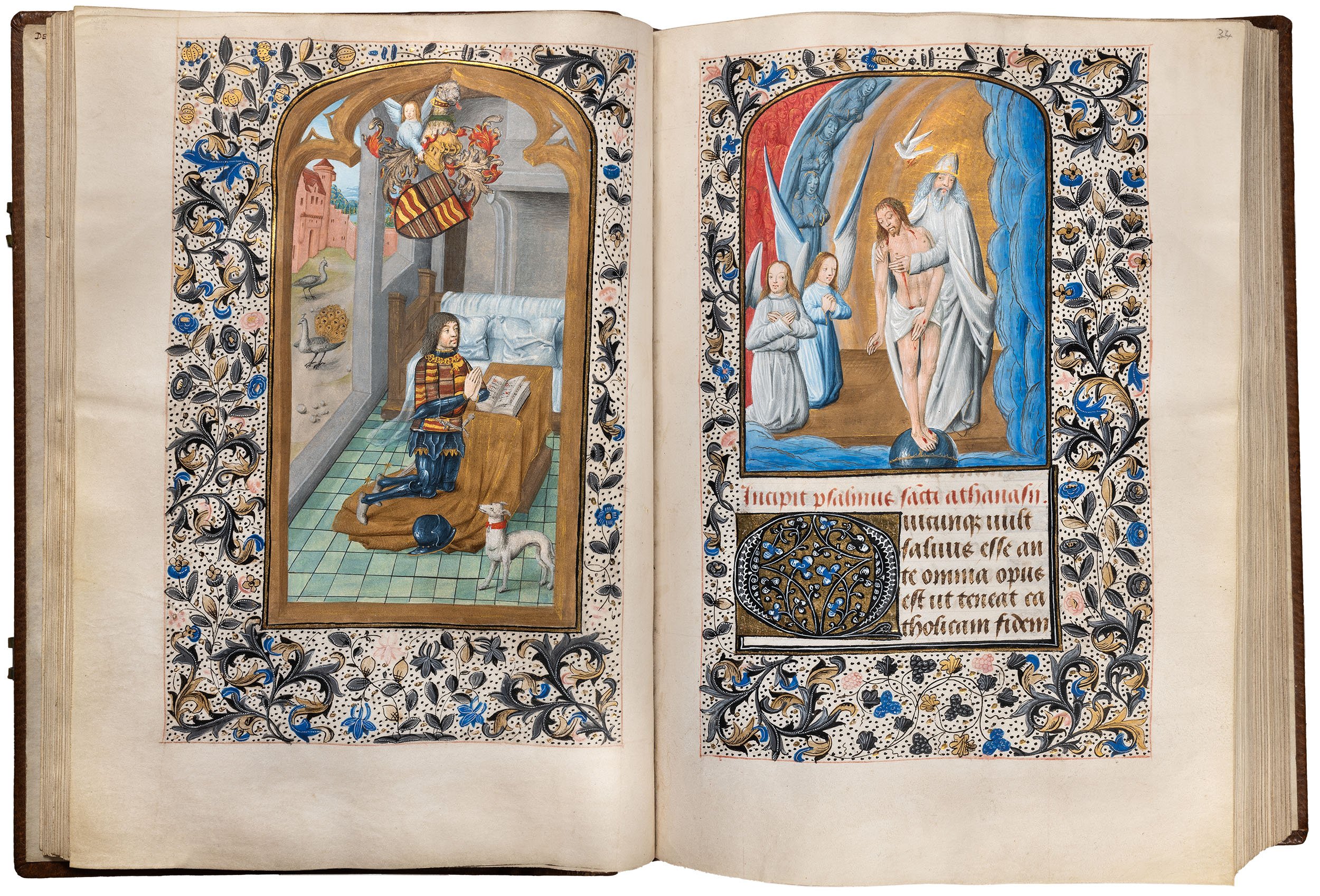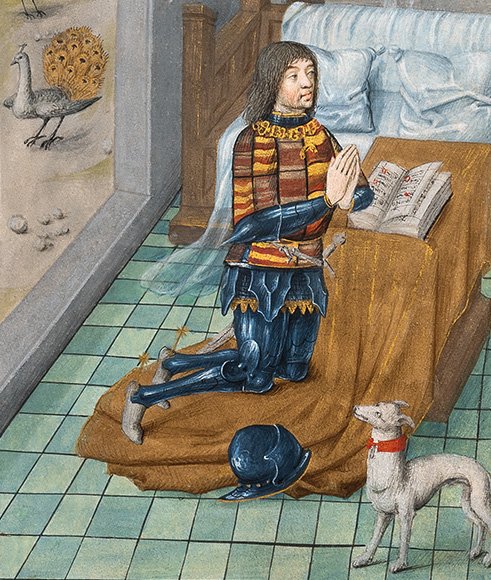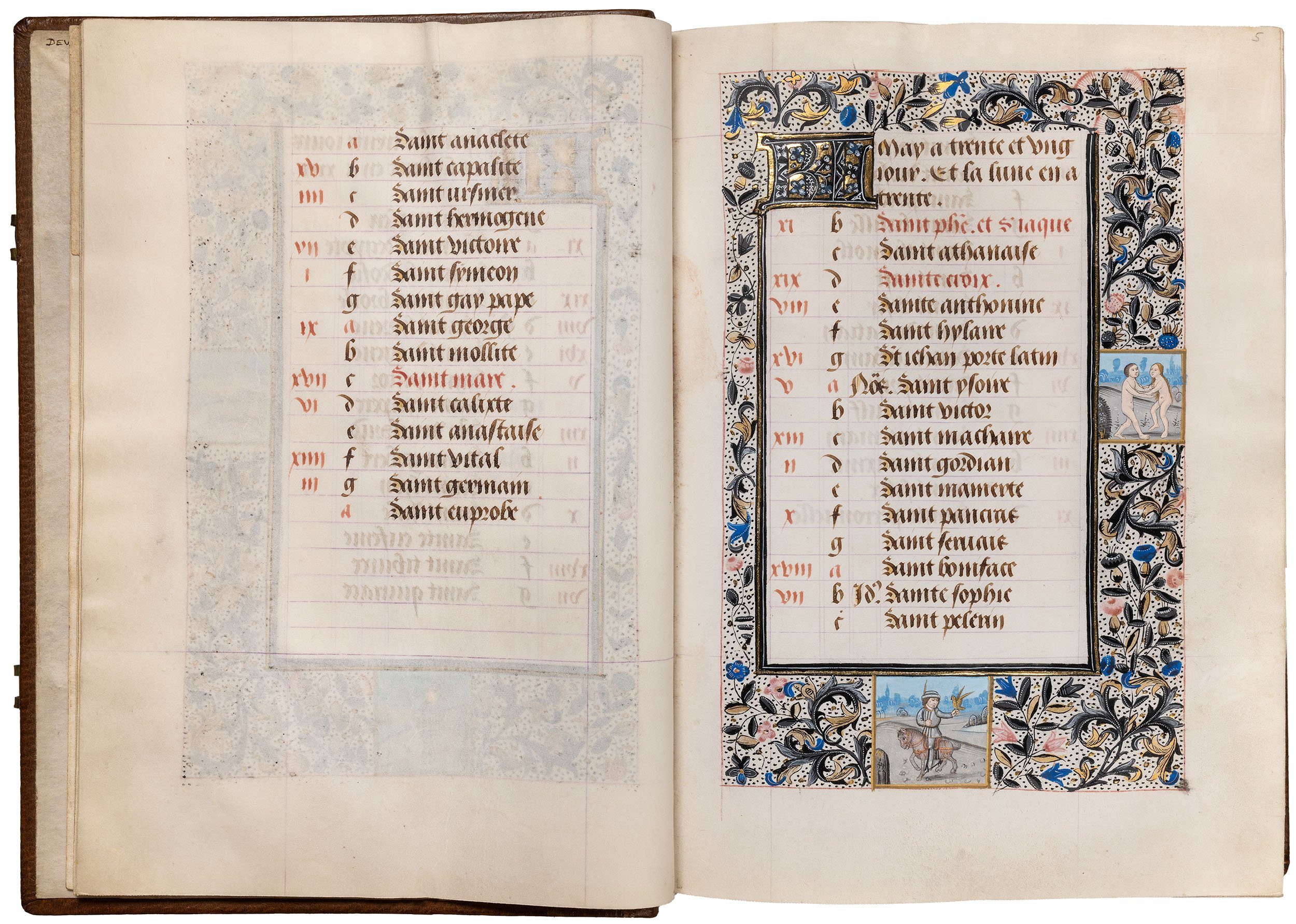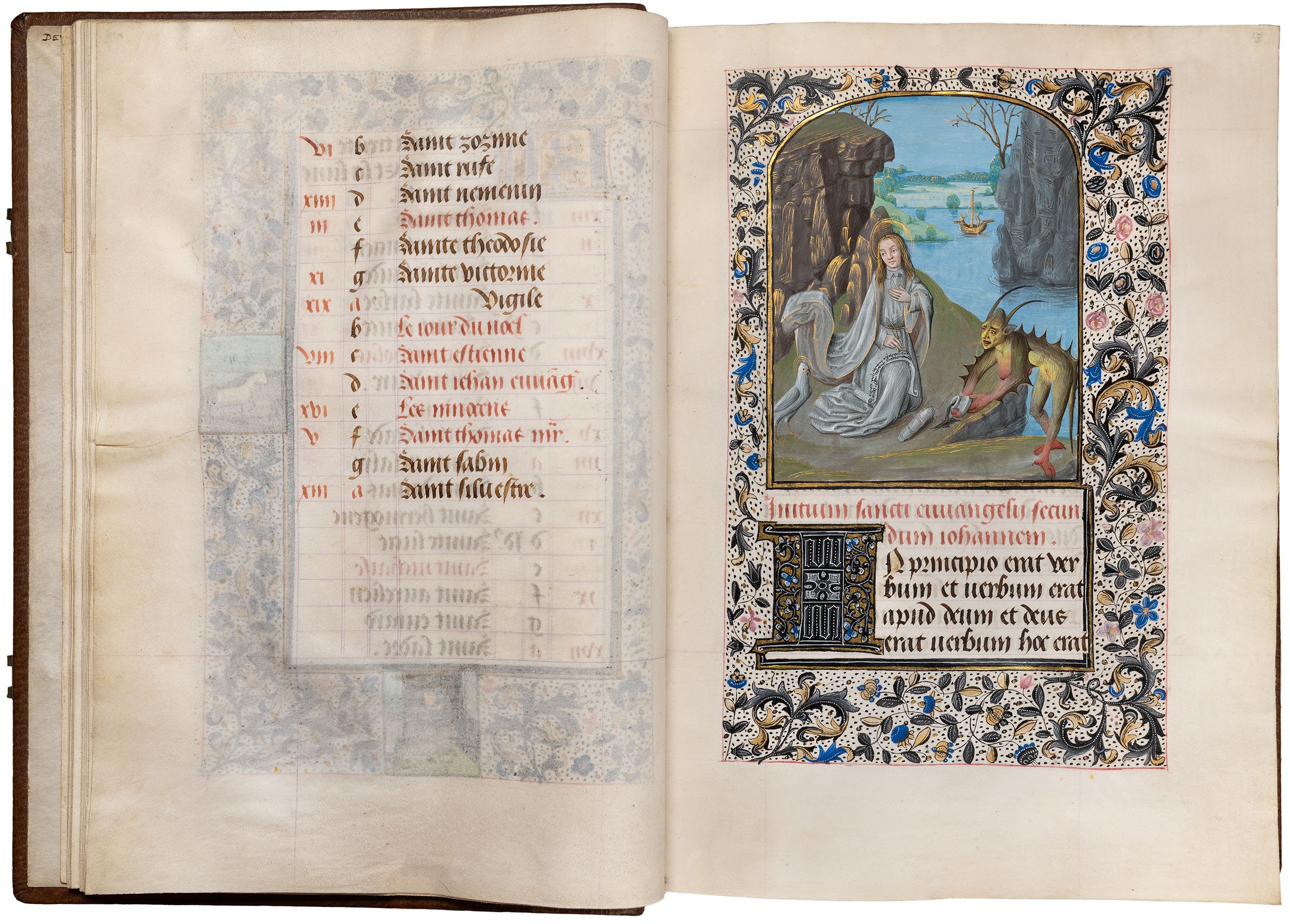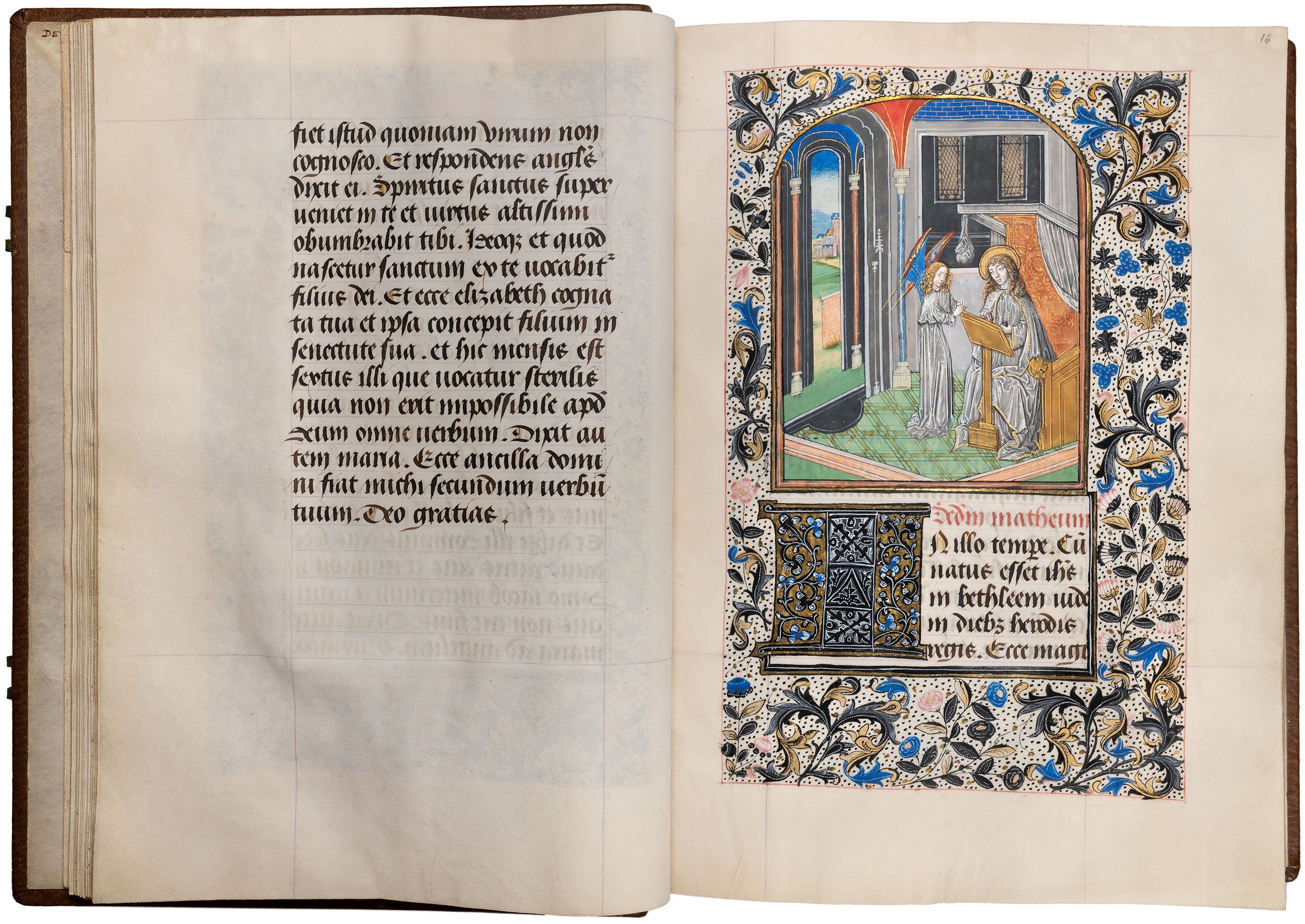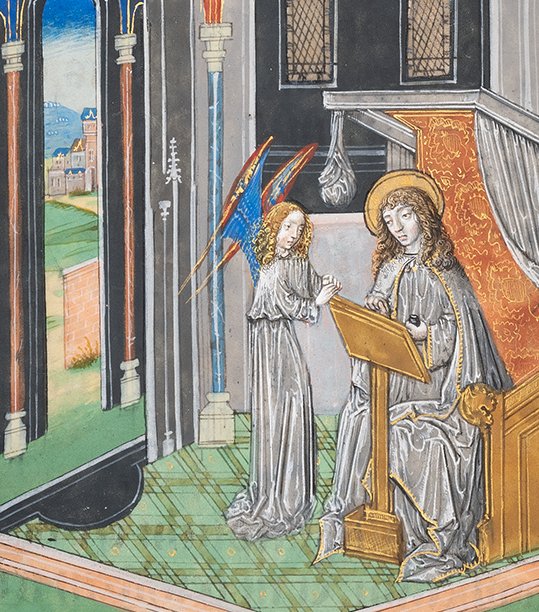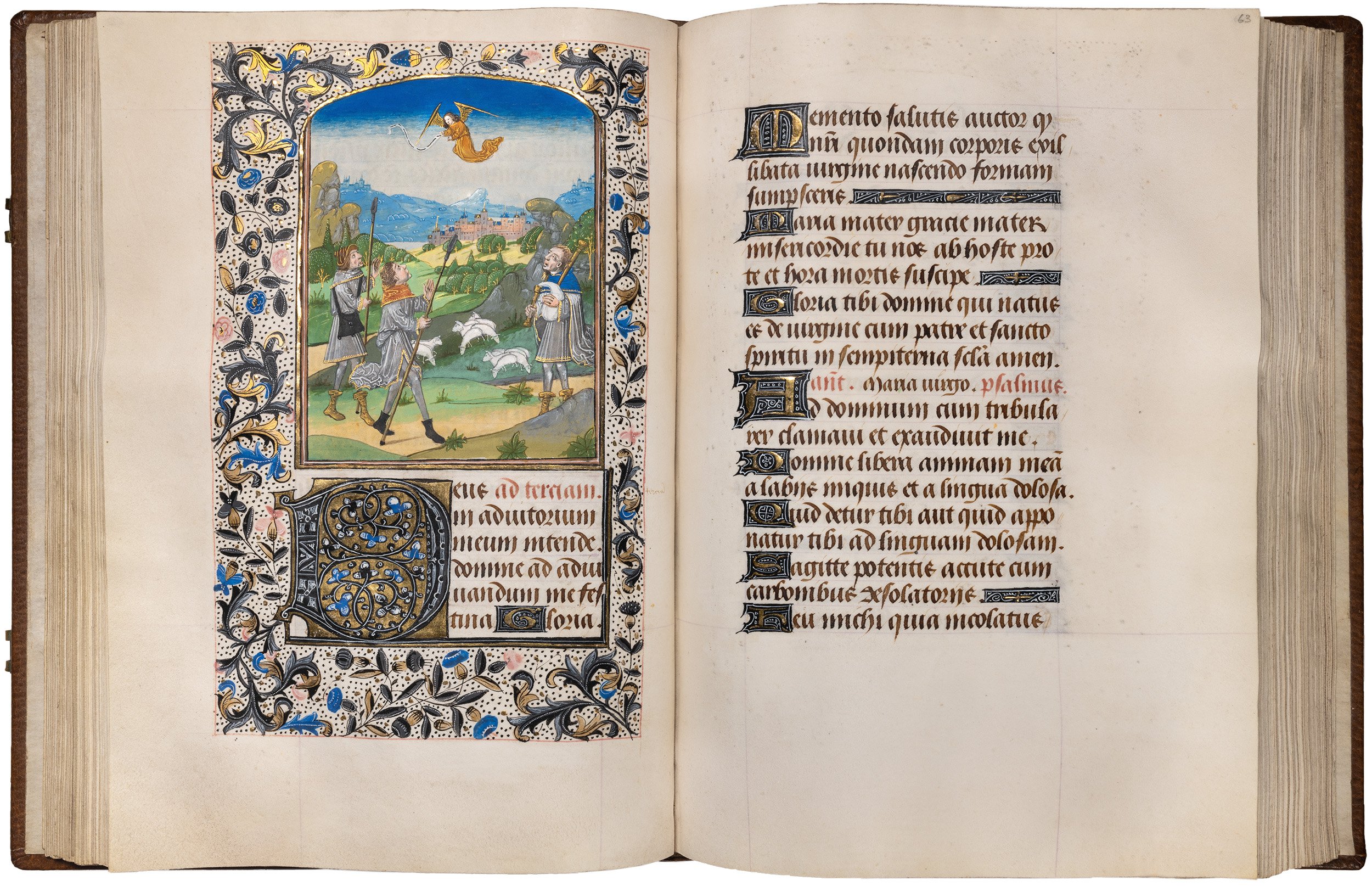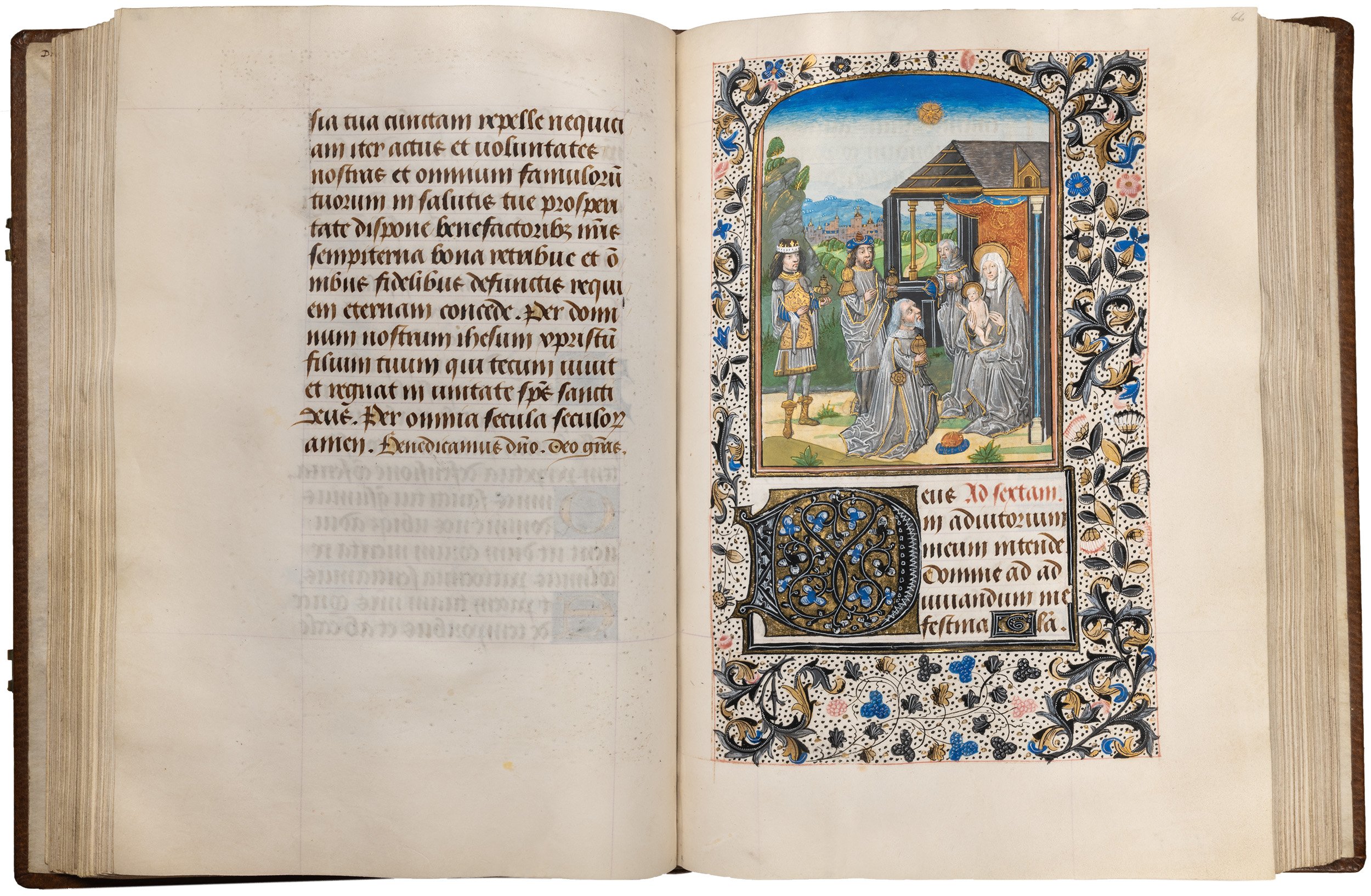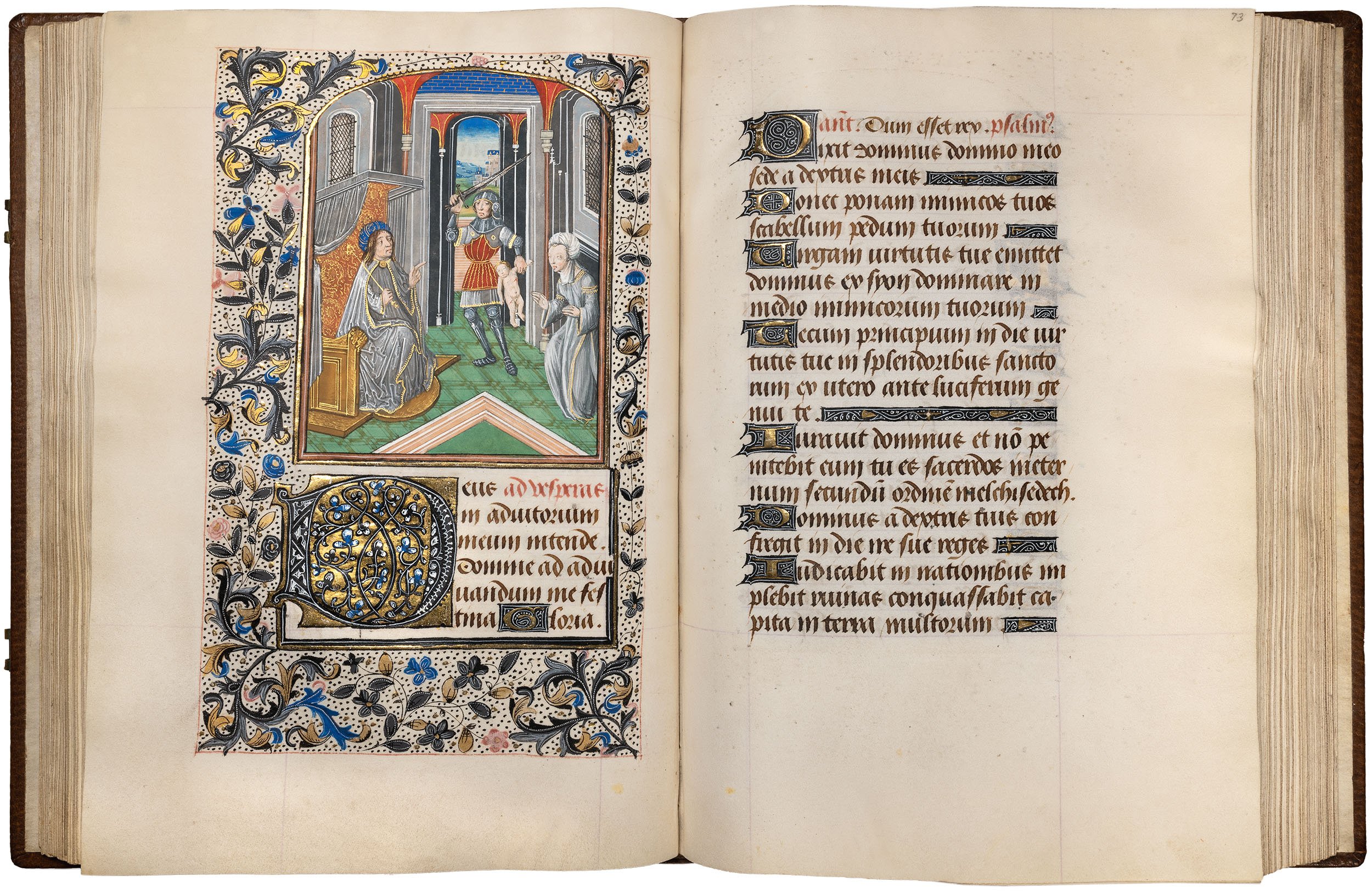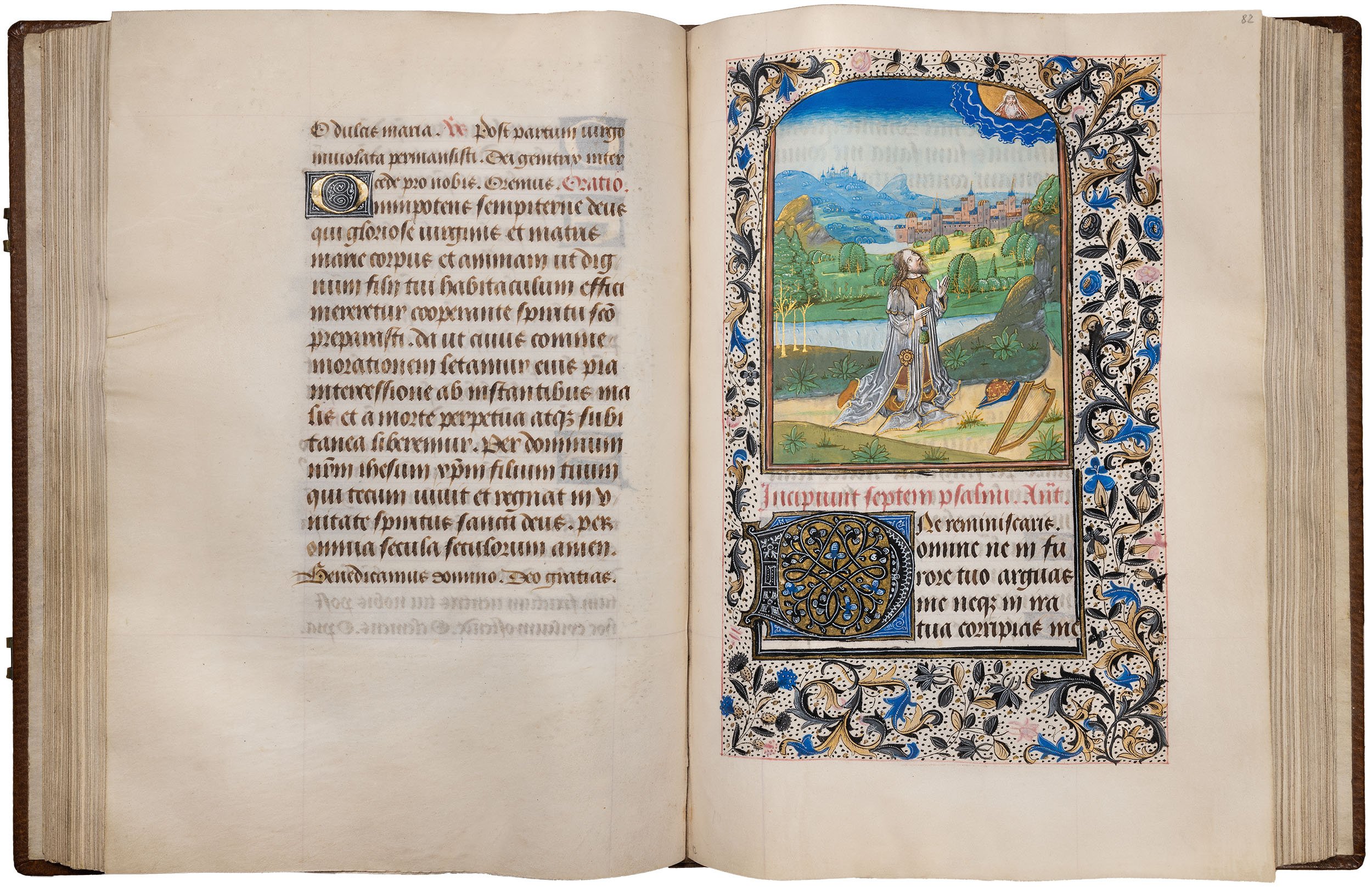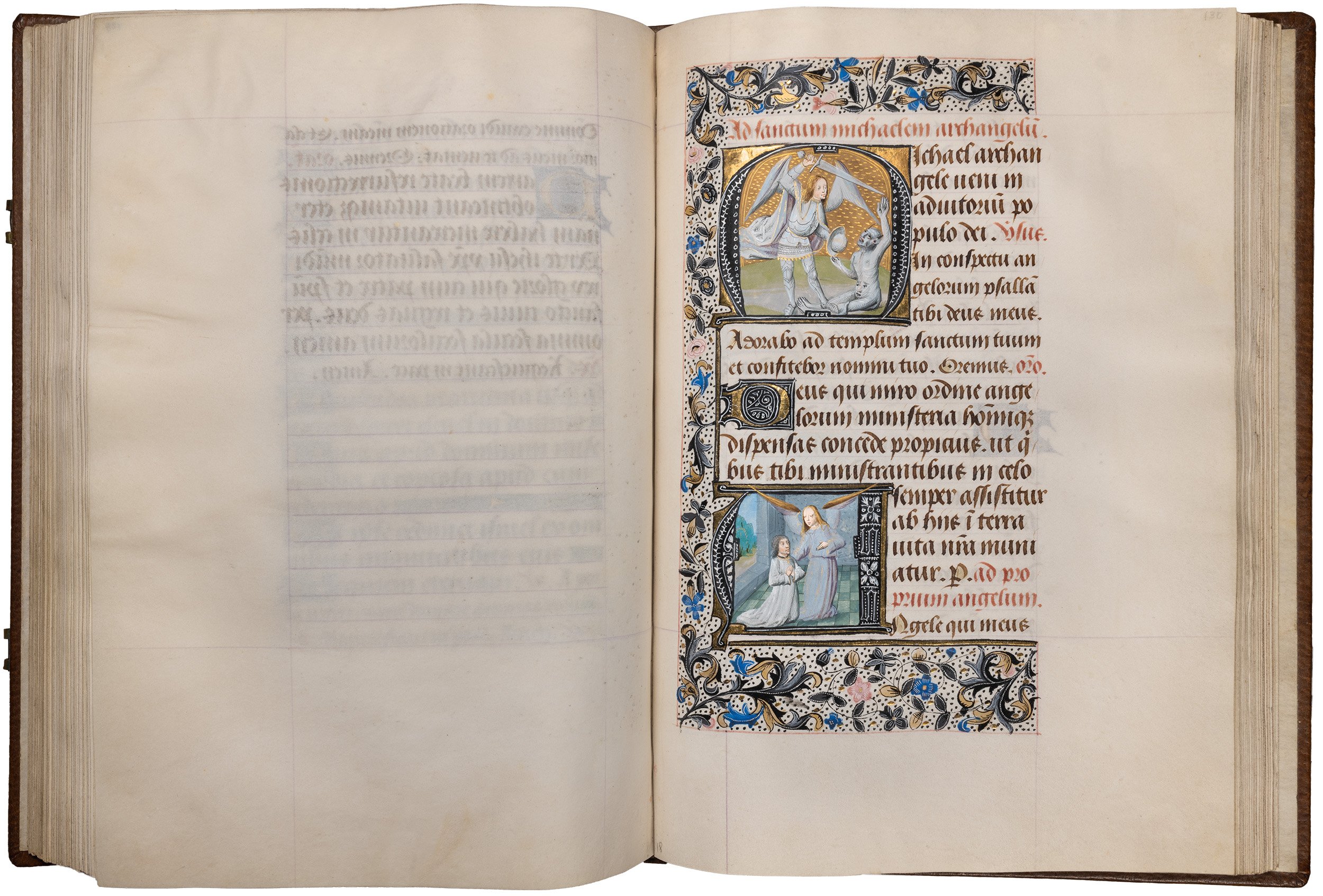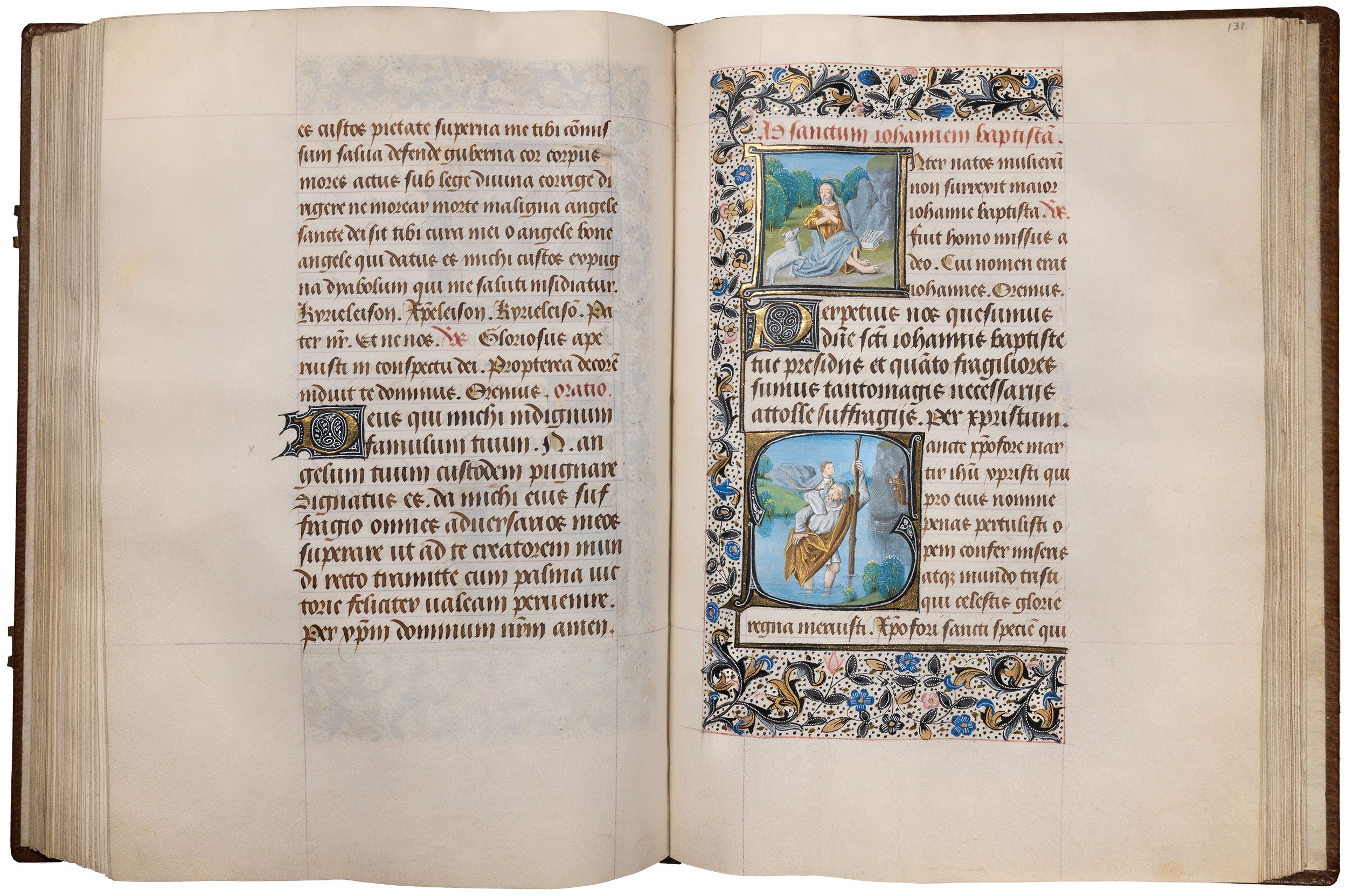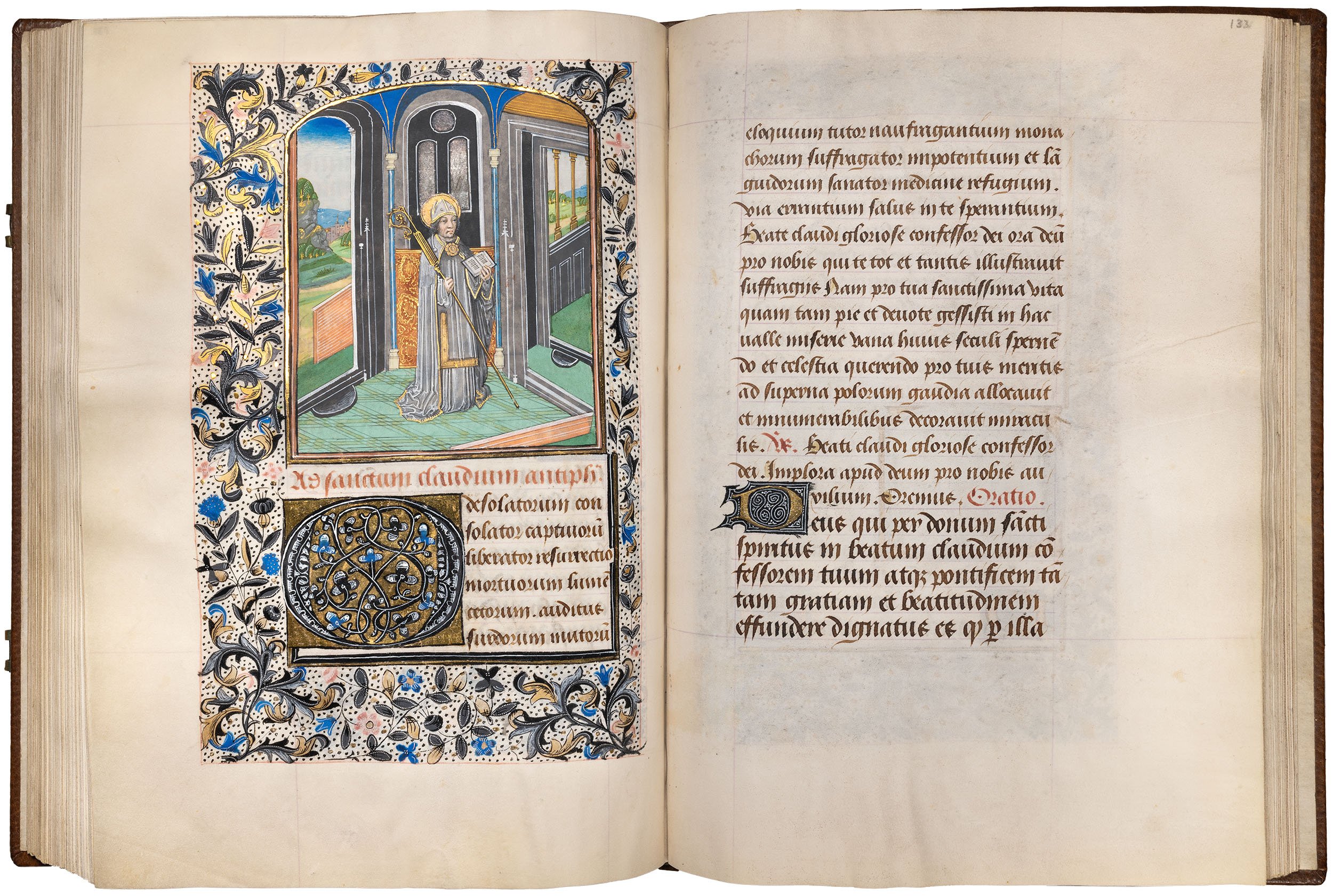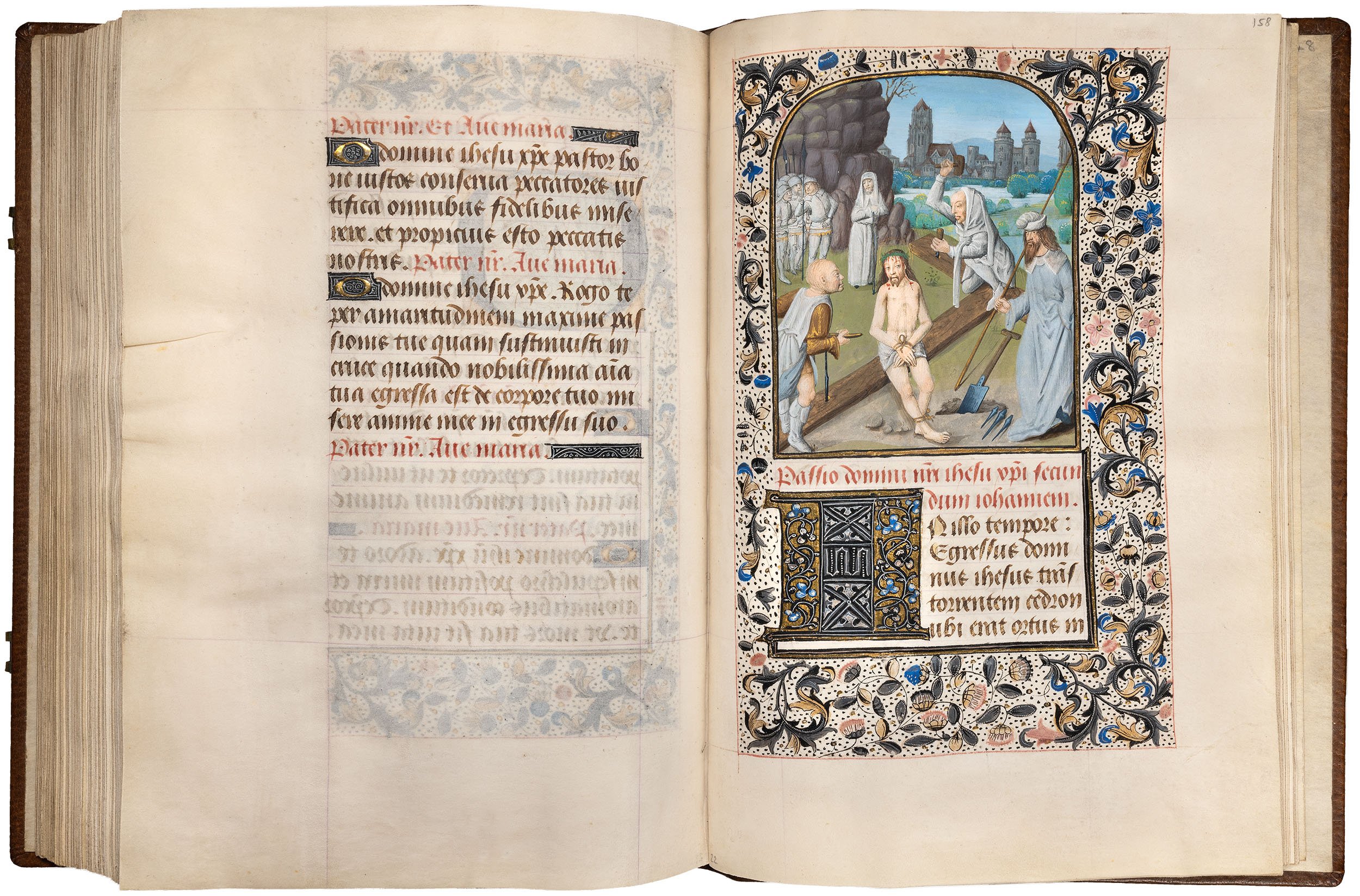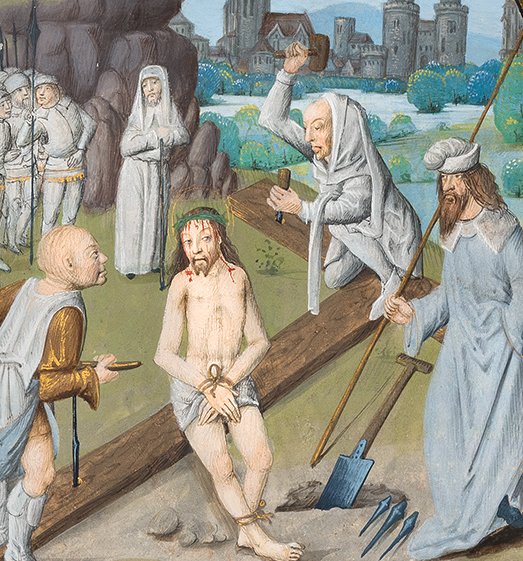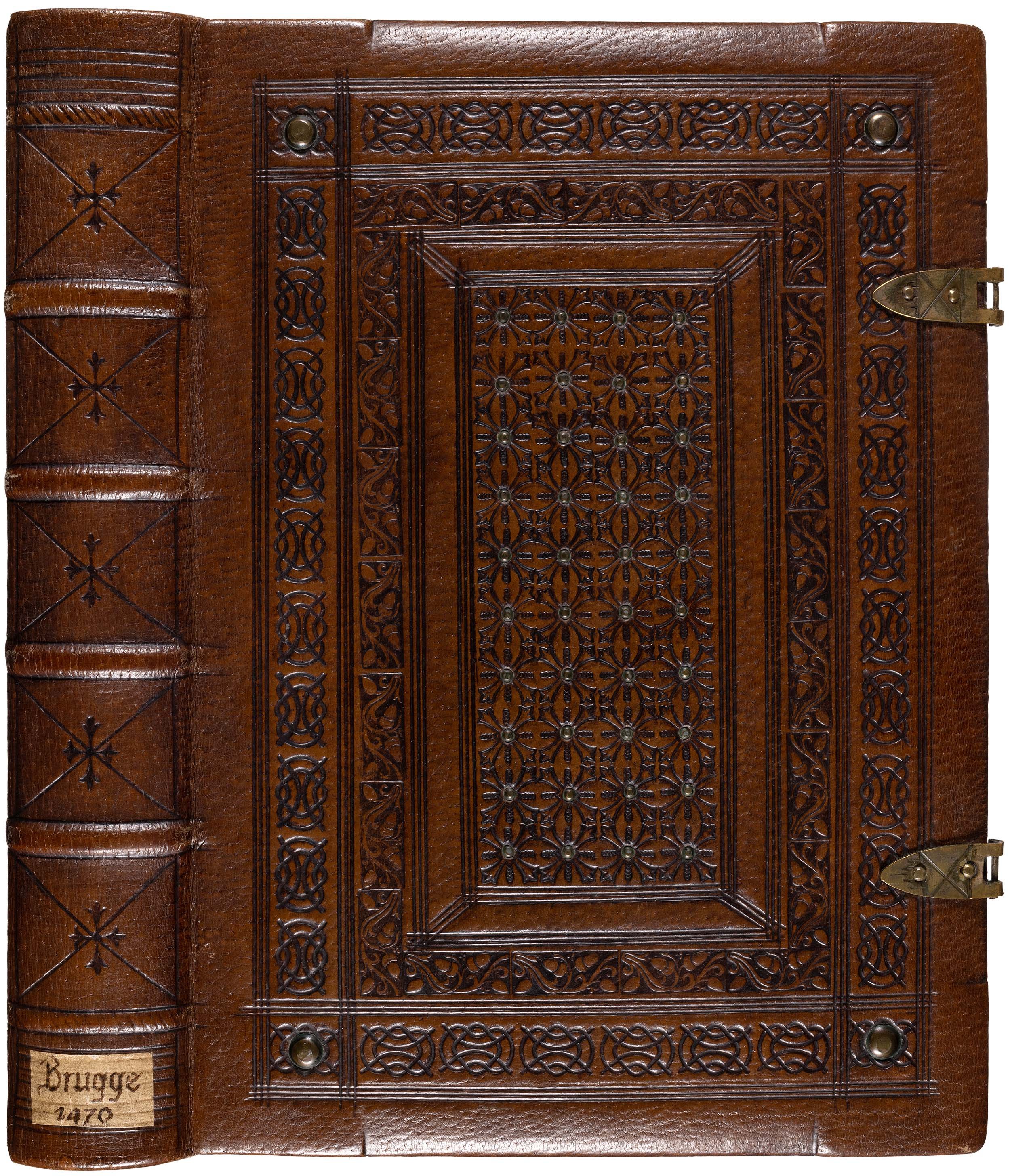One of the Largest Known Books of Hours: Made for Claude de Toulongeon, Knight of the Order of the Golden Fleece in Absolutely Immaculate Condition
Book of Hours. Horae B. M. V. Illuminated manuscript on vellum in Latin and French with 20 full-page and 34 smaller miniatures. Bruges, c. 1479-81. 171 leaves, complete and in mint condition. Chancery folio (270 x 194 mm). Modern calf leather binding over wooden boards, blind-tooled, two clasps.
This Book of Hours is named after its initial owner, one of the knights of the chivalrous Order of the Golden Fleece, to which he was elected in 1481. Painted in a rare semi-grisaille style by the Master of Claude de Toulongeon, the Master of Edward IV and two other hands, it was undoubtedly planned for Claude from the very beginning: a large portrait miniature of him accompanies the suffrage to St. Claudius, and Claude himself, recognizable from contemporary portraits, appears in the most important one and in three more miniatures.
This imposing chancery folio-sized manuscript - larger than the Bedford Hours - has been stunningly preserved, and was at one time in the possession of Henry Broadley (who was its owner when it was described and depicted by Dibdin in his Bibliographical Decameron, 1817, and who regrettably had the original binding by Johannes Guilebert replaced with a nondescript English binding), and later Joost Ritman.
In its overall form, this eminently large-format, wide-margined and immaculately preserved Book of Hours is an aesthetic sensation, as colour reduction is used consistently here, even in the initials and borders. A great master of his art, whom we name after this Book of Hours, painted the main miniatures and the small miniatures to the suffrages. Alongside him, two painters of different geniuses applied the extremely multifaceted concept of semi-grisaille to the pictures, each in their own individual way.
Claude de Toulongeon is the only possible patron. As the later-born son of Antoine de Toulongeon, who was one of the first Knights of the Golden Fleece, he did not have the family coat of arms until 1479, after he had already been Chamberlain to Philip the Good. As a member of the Council of Mary of Burgundy, he was on her side in her dispute with King Louis XI and was himself admitted to the Order in 1481.
This important lord, whose Burgundian estates lay on the border of the Burgundian barony, had his Book of Hours written and painted at a time when a new style was already flourishing, which Otto Pächt centred around Mary of Burgundy. While the caesura had previously been placed in the reign of Mary of Burgundy, during which our manuscript was also created around 1480, our view has since changed, as the main works associated with Mary evidently date from the years around Charles the Bold's marriage to Margaret of York in 1468. Our manuscript sets itself apart from this new style of book illumination, which had already been alive for a decade around 1480. It is remarkably indebted to older traditions, the text is still strongly French in character and of an unheard-of huge format (larger than the Bedford Book of Hours, for example). Impressive in its rigour of colour and artistic consistency, the Book of Hours for Claude de Toulongeon is one of the highlights of Burgundian book illumination.
Literature: T. F. Dibdin. The Bibliographical Decameron. London 1817, Vol. I, p. CLXXII. - Brinkmann, Bodo. Die flämische Buchmalerei am Ende des Burgunderreichs. Der Meister des Dresdner Gebetbuchs und die Miniaturisten seiner Zeit. Turnhout 1997, p. 300. - M. Smeyers. L’art de la miniature flamande du viiie au a xvie siècle. Löwen 1998, p. 444.
This manuscript has been described in great detail in our catalogue 88, available in the Online Shop.
If you would like to receive further information on this work, please contact us.
